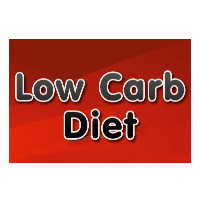State Board's Carbon Fuel Limits Pick Up Where Failed Legislation Left Off

It’s not exactly a new regulation (pdf) with tougher fuel standards, designed to accomplish administratively what Governor Jerry Brown couldn’t push through the Legislature—as touted in varying degrees here, here and here.
But the action taken Friday by the California Air Resources Board (CARB) does affirm and strengthen the state’s initiative to quickly and dramatically reduce carbon emissions through cap-and-trade. The aim is to clean up current carbon use while encouraging renewable energy resources and alternative transportation technology.
The board revised the Low Carbon Fuel Standard (LCFS), a regulation passed in 2009 that aims for a 10% reduction in carbon generated by transportation fuels by 2020. Emission-reduction targets in the LCFS escalate every year. The regulation was contested in court by the oil and gas industry and wound up being kicked back to the board, with a freeze on the escalator, for mostly procedural reasons.
The board sorted that out, but in the process spent a lot of time talking to unhappy stakeholders and business folks. As a result, the regulation has a few new features.
Cap-and-trade lets companies that pollute buy credits from lesser- or non-polluters in a marketplace that can be volatile. The new rules cap those prices, adding stability and cost-control. They also streamline the application process for alternative-fuel producers to participate and spiff up “the process for earning LCFS credits by charging electric vehicles.”
The program is a key element in achieving Governor Brown’s avowed goal of reducing petroleum use 50% by 2030. Legislation to do that died in the Senate earlier this month. The Western States Petroleum Association opposes the 50% goal and said there aren’t enough “low-carbon biofuels available in sufficient quantities to allow refiners to comply with the regulations.”
Instead of pollution control, the WSPA said, the state will just see higher fuel prices. CARB estimates the regulation could add 4 cents to the price of a gallon of gas next year and maybe 13 cents by 2020. That has also been penciled out to mean a $20-$24 cost per consumer per year in 2017 and $52-$56 in 2020.
The regulations are not related to the Volkswagen fiasco. Of the 11 million VWs spewing up to 40% more emissions than one would expect from a product advertised as “clean diesel,” around 480,000 are in the U.S. and 65,000 are in California. They will continue to foul the air everyone will be paying dearly to clean up while a massive recall, that owners are not going to like, is eased into place.
–Ken Broder
To Learn More:
California Board Backs New Limits on Carbon from Gas and Diesel (by Ian Lovett, New York Times)
California Air Regulators Readopt Fuel Standard to Fight Climate Change (by Tony Barboza, Los Angeles Times)
California Air Regulators Order 10 Percent Carbon Emissions Cut for All Fuel Sold in State (by Judy Lin, Associated Press)
Oil Industry “Million-Dollar Smokescreen” Dooms Gasoline Cuts in Climate Bill (by Ken Broder, AllGov California)
- Top Stories
- Controversies
- Where is the Money Going?
- California and the Nation
- Appointments and Resignations
- Unusual News
- Latest News
- California Forbids U.S. Immigration Agents from Pretending to be Police
- California Lawmakers Urged to Strip “Self-Dealing” Tax Board of Its Duties
- Big Oil’s Grip on California
- Santa Cruz Police See Homeland Security Betrayal in Use of Gang Roundup as Cover for Immigration Raid
- Oil Companies Face Deadline to Stop Polluting California Groundwater





